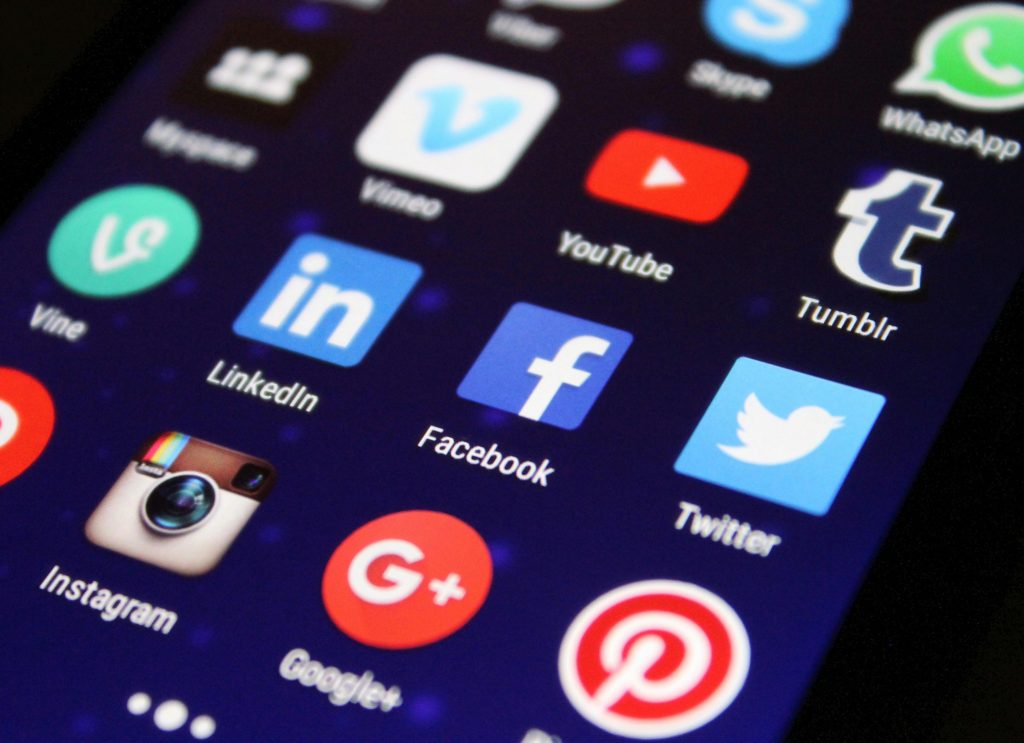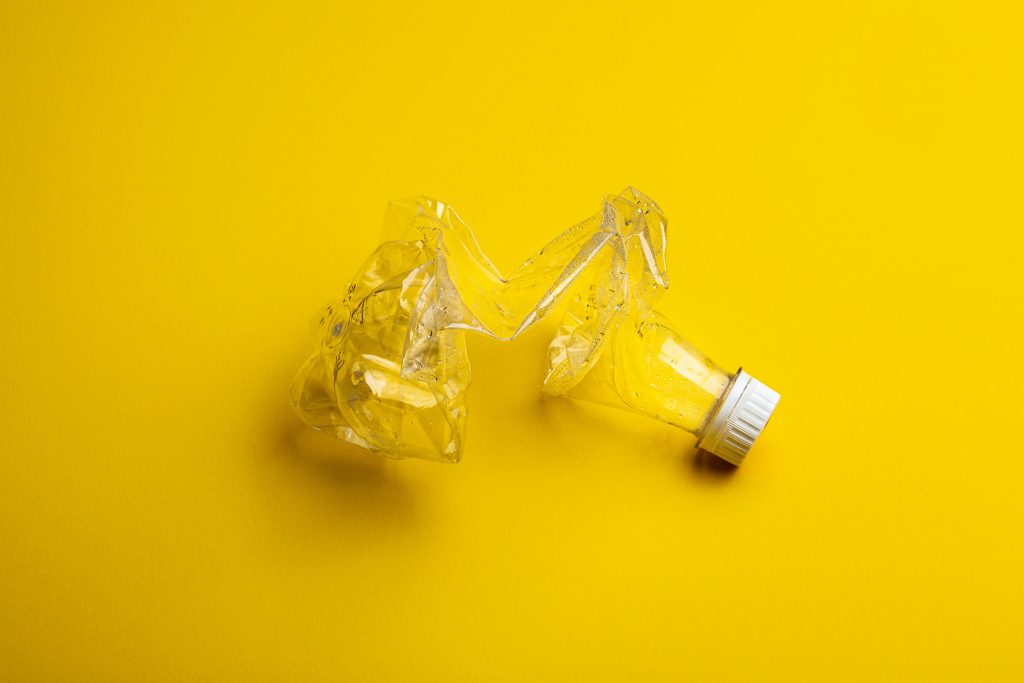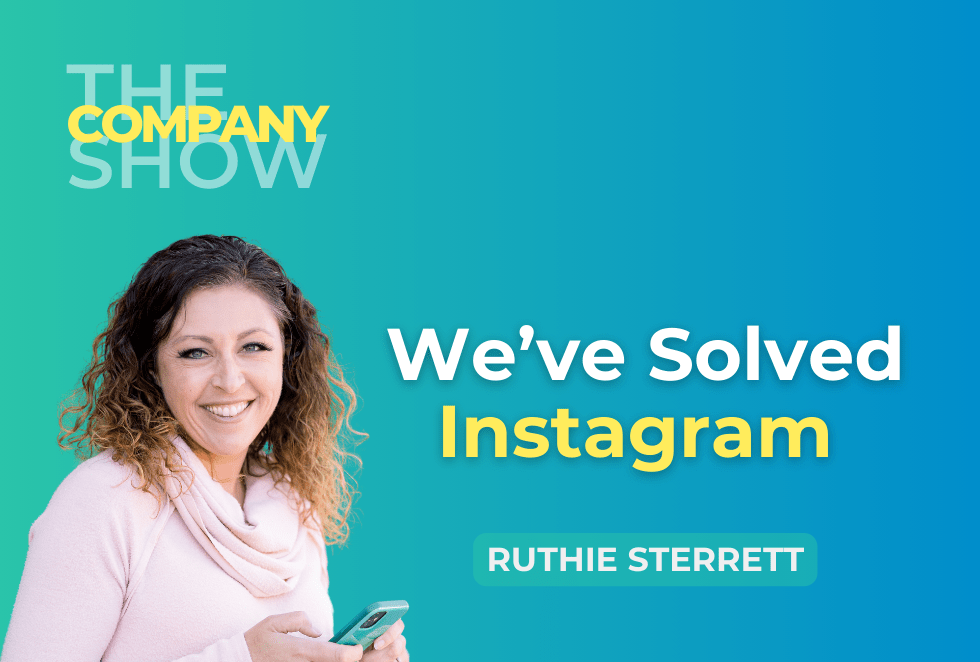There are those who love social media and there are those who hate it.
There are also those who, despite kind of hating social media, understand that people are using it and as a business they should have a professional and appealing presence on it—I’ll let you guess which one I am.
Whether you’re doing it yourself or managing a team who’s doing it for you, the day-to-day and the constant grind of creating content can be just absolutely excruciating, not to mention expensive.
Happily, you don’t actually have to use every platform every single day to have that professional and appealing presence.
Social media, especially Instagram for me, has been the nut I just can’t crack. I understand that it’s valuable. I understand that it’s a great way to connect. I’ve just never been able to really use it effectively, and that’s both personally and professionally. I don’t use Instagram that much.
Happily, I’ve got a great team member who’s able to create really awesome, engaging posts and share the things that we want to share, like the amazing guests that we have on this podcast. But it has not been a major focus of the work that we’ve done on social ever since we started One Stone Creative.
My guest today has the solution for this problem and has perhaps even cracked the nut of Instagram.
Ruthie Sterrett is a fractional CMO and founder of The Consistency Corner, a holistic marketing agency supporting service based businesses. Her whole business is about helping CEOs step away from social media, without sacrificing visibility, because most CEOs didn’t start a business to be a content creator.
And to that I say: YES PLEASE.
Ruthie and I talked about about what most businesses really need from the social media platforms they use, the key consideration most of us don’t really make when it comes to strategizing how to use them, and how to make your Instagram work for you even if you don’t want to use Instagram.
Listen to the episode below or continue reading the blog post!
Tune in to the full episode to learn:
- Why social media is so hard
- Strategic social media use
- Social media and funnels
- Why intentional social media matters
- The Instagram 9-Grid Strategy
- How to use ManyChat
- Who shouldn’t use The 9-Grid
- How to repurpose Instagram for other platforms
We’re looking for speakers for this year’s Podcasting for Business Conference! Click here to learn more.
Why is Social Media So Hard?

Ruthie: “When I was working in corporate retail, I was a marketing director for an omnichannel retailer, and I was managing 16, maybe 17 different social media profiles, in addition to doing like 500 other things—as you know, we all wear many hats.
Plus I had my own social media, plus I was side hustling, so I had my own social media business strategy, and I was spending a lot of time on the apps, Instagram, Facebook, and I had to because it was part of my job, so I couldn’t just be like, I’m not gonna do this anymore.
But one day I realized after spending, I don’t know, 30, 40, maybe even an hour, minutes on the platform, scrolling for who knows what, the dopamine hit that we sometimes get, I put my phone down and I thought, oh my god, that added nothing to my life.
That added nothing to my life. But we find ourselves picking the phone back up and opening the apps because sometimes we see a funny reel. Sometimes we see a meme that makes us laugh and is very relatable and helps us feel seen.
Sometimes we get to see something that a friend did that makes us feel connected. So there’s value in it. But because there’s value in it, we tend to get addicted. I mean, these apps are addictive.. We all know. They’ve done studies. They design them to keep you on them so that they can sell advertisements and make money. They’re a business.”
Leveraging Social Media for Your Business
Ruthie: “In that moment, I realized I have to do something different. I created at that time what I call the Stop the Scroll Challenge, which is a free five-day challenge that basically allows you to break the pattern of having to scroll all the time and being on the app and the addictiveness of it. It involves using timers, setting app limits, and also having marketing strategies for your own business outside of social media.
But as we talk about that, I know we’re going to get into that today, even if we have marketing strategies outside of social media, people are still on social media, our potential customers are on social media.
So we do have to find a way to leverage it in our business that doesn’t make it feel like we’re on this content hamster wheel, that doesn’t feel like this huge time and energy suck, where we’re just throwing spaghetti at the wall and wondering, is this even working? What is the point?”
Megan: “Ultimately, exactly as you say, everyone who uses social media is a person and a lot of us are just kind of, I call it doom scrolling when I do it personally.
But for work, I have this persistent notion that it’s just a nut I haven’t cracked yet. But there is a way for it to become a powerful either driver of new business or to have a big enough audience that it becomes a resource I can use to promote things that can help me be more appealing to like different guests or potential clients.”
Strategic Social Media Use
Ruthie: “The first thing I do with my clients is we take a step back and before we even talk about social media, we break down the marketing funnel and we say, okay, what tools, what platforms, what strategies are we using to attract, nurture and convert our audience?
I’m pretty certain that not one piece of content for sure and not one platform can do all three. So we do have to have different strategies, different platform, different containers for our marketing. So it’s important to decide and be intentional about where are we attracting.
Well, from a social media perspective, the ways that you attract or get new eyes on your business is typically video content because we know it gets shown to audiences that don’t already follow us, hence that like attract new business or paid ads.
That’s pretty much it. So if you’re not doing one of those two things on social media, you are not using social media for the top of funnel—and that’s okay. But being aware of that can help you understand, okay, where am I using social media? And what am I using in those other places?
So top of funnel could also be networking, it could be SEO and having content on your website that is highly relevant and searchable. It could be referrals from your current customers or your network. There’s a number of ways that you can, appearing on other people’s podcasts, all of those are ways.
So when we decide, okay, what are the strategies that I’m going to do? How consistent do I need to be in those strategies? What is the intensity that I want to leverage? Now we can think about it a little bit more logically than the emotion that sometimes commits in when we’re trying to market our business.”
Nurturing Your Audience
Ruthie: “So as we move down the funnel, nurture, this is where I think social media plays a big role. People getting to know you. What happens when somebody tells you about a business or a product or a service and recommends it? Well, you go look it up on the internet. That’s what we do. That’s what humans do now.
You might go to a website or you might go to their social media profile or you might go to both. So your social media platform is an opportunity to help people get to know you. Learn if you’re for them. Learn if they want to hear more from you, if they want to move down the funnel and deepen that relationship.
We can do that with social media content without constantly posting if we’re really intentional about that content. Now, if the content we’re putting up is like a picture of our dog and our last vacation, those things are all fine. But is that going to move the needle in your business? Is that going to help people move down the funnel and get to know you quickly?
We also know that people’s attention spans are so short. So if we don’t have the right intentional strategic content there for them to consume quickly and easily, we could be moving, leaving money on the table.”
Why Intentional Social Media Matters

Ruthie: “I love this example for hairstylists. I was looking for a hairstylist recently and asked for some referrals in a Facebook group of local people. I mean, I got literally 20 recommendations and me being the nerd I am, I made a spreadsheet of all of them and like put in their address and how close they are to me and what they specialize in.
But then I started looking up their social media because I want to know more about them as people. Because let’s be honest, your hairdresser, I see my hairdresser more often than most of my friends. I would like to like this person. But then also the work that they do.
And the people that were not posting on social media or hadn’t posted in a really long time or their content wasn’t really relevant, I moved on. I didn’t even continue to go down the rabbit hole of researching those people. That’s what could happen if we’re not leveraging social media intentionally.”
Conversions
Ruthie: “Again, as we move down the funnel into the convert phase, where we’re asking people to maybe join our email list, or we’re asking people for even a sale and to purchase something. Social media can do that, but we don’t want to be like that person who asks you to marry them on the first date, because that’s what selling in every single post is.
It’s like, buy my thing, buy my thing, buy my thing! Okay, we get it. We know that you sell a thing. So we want to make sure that we’re nurturing and selling in social media so that the relationship feels good versus the , I only want you to buy the thing from me.
There are other ways that we can sell outside of social media, email marketing, direct outreach, great calls to action on our website. But having all of those things kind of figured out then you as a business owner can decide where and how social media is going to work for you because it doesn’t have to be the same as everybody else or anybody else.
You want to find a strategy that feels good and fits for your bandwidth, your personality, and your business goals.”
Megan: “I love what you said there, especially about the intentionality of approaching social media in this way, because I’m probably not the only person or business owner who’s had this experience where creating the content to go on Instagram or up on Facebook, it becomes just such a part of the job.
I don’t know if anyone is even actually thinking about doing it and I’m as guilty of this as anyone else. We put a lot more effort into stuff that we create for clients, but for our own stuff, I’m just like, well, it’s got to go out. Let’s just do it. There’s not a lot of thought involved.”
The Instagram 9-Grid Strategy
Ruthie: “The first reminder that I want to share with everybody, and I share this actually at the end of every episode of my podcast, is consistent does not have to mean constant.
So if we can level set with that reminder, we don’t have to be constantly posting. In fact, most business owners I know did not start their business to be a content creator. They started their business to help people. They started their business to serve. They have a passion for what they do.
If you started your business to be a content creator, okay, that’s a different conversation. But most people did not. So that’s why I love the Instagram 9-Grid Strategy. What that is, is a visual content strategy that turns your Instagram profile into a mini website, or like a magazine cover, or billboard for your business.
The crazy thing is most people who could benefit from this strategy don’t know what it is. They’re like, huh, what’s a nine grid? I tell people all the time, oh, I’m a fractional CMO. I have become known for the Instagram 9-Grid Strategy, and people are like, what is that?
So we call it a nine grid because it is the first nine posts on your Instagram grid. I’m extra. I typically do 12, sometimes even 15, because I like to do a little more but you want to do at least nine.”
How to Approach The Grid
Ruthie: “In those nine posts, you’re going to share who you are, who you help, how you help them, the transformation that they can receive when working with you, your free resources if you have any, or where else you hang out if you have a podcast, or maybe you’re a LinkedIn person and you spend more time over there, or you’re a Facebook person, or you hang out in stories.
You let people know that in the posts. You tell them about your offers and what it is that you actually sell and how they can work with you. Then we weave in your brand values and your mission and your vision so that they really know, oh yeah, this person is for me. We have a connection here and it’s not all about business.
Once we put those nine posts up, this is truly a set it and forget it strategy. What that means is you don’t post anymore. People are like, wait, what? You don’t post anymore. But what about the algorithm?
Is the algorithm doing any favors right now? No. So who cares? Who cares about the algorithm? Get the intentional content up.
Then as people find you, and we work through those other strategies in the funnel that we’ve already mapped out, your Instagram is there being intentional and sharing exactly what someone needs to know to decide whether or not you are for them. You don’t have to think about posting anymore.”
Megan: “I think I remember when the first time we talked, and this is the last stuff you need to do on this platform. That’s such an exciting idea because it feels like there’s this huge opportunity cost or this huge risk for not being out there and being active.
But as you have so well explained, If you’re not active there and you might as well have the information someone needs if they happen to be active there. Because most of us aren’t active on just one platform, right? We do other places.
So I love this concept. I love this idea. I love how efficient it is.”
What To Include in Your Instagram 9-Grid Profile

Ruthie: “The first thing I actually want to share is that as you design a nine grid, and I do have some tools on my website that helps you with this, that gets deeper into it, because we definitely can’t cover it all in a podcast…
But as you design the grid, keep in mind that when you start to post it, the last post, post number nine, bottom right-hand corner, is actually what you post first. because it loads backwards.
So what I see a lot of people do is they will write that post, post number nine, as the introduction post because they know that they’re posting it first. But When people come to your profile, that’s the last thing that they’re looking at.
So we really want our intro post, hi, I’m so and so, this is what I do, to be the top right, left-hand corner, or the ninth or last post that you post. So that shift in and of itself can help you think about what we really want these nine squares to be is a journey.
We want someone to see immediately, oh, this is who you are. Okay.”
Post #2
Ruthie: “Now post number two is often great to share a free resource here. This is how I can help you. Here’s a free resource or maybe if you’re a podcast host, this might be listen to such and such podcast because I’m going to be over here.
I actually love the 9-Grid for podcasters because so many podcasters, we will post clips from our podcast, whether it’s an audiogram or actually videos from the show in Reels, but then somebody lands on your profile and it’s just a bunch of photos of talking heads.
That’s not super compelling for somebody who doesn’t already know who you are and is checking you out and checking out your podcast.
So what you can do is have one of these posts be about your podcast, what it’s about, who you talk to, what topics you cover, and then you can have a get previews of the show over on our Reels tab.
And the thing is you can keep posting reels with a 9 grid and then you just remove them from the grid so they only live on that reels tab. But then your magazine cover is still on the main profile, the main tab, sharing all that super important information that maybe isn’t being covered in every single clip because you’re only pulling out 60 seconds or 30 seconds of each podcast.
So I love that for podcasters.
Then typically we want to also make sure in one of the very first posts that we’re sharing how we help people—what is the transformation that people can expect when they work with us, and kind of painting that picture of before and after.
At this point, we can go ahead and mention an offer, or we can just kind of continue down the path of the grid. Typically then that hero post. So let’s say the middle of the grid, the one that when you’re looking at it in a whole thing, you’re looking at someone’s profile, that’s going to be your main selling post.
So that’s going to be like a how we can work together, what I can do to help you. Then some of the other posts just kind of share, opinions or values or educational content kind of sprinkled in throughout there.”
Megan: “Oh, that that is so fun. I just love this strategy. It feels like to me, it really takes advantage of some of the best things about social media, especially on Instagram, where people do so often use it for shopping and as they’re making these kind of buying decisions.”
Mid-to-Bottom Funnel Engagement with The Nine Grid
Ruthie: “I love the invention of ManyChat because then we can automate that conversion or that moving people down the funnel with keywords and automation. Even if you don’t use mini-chat, you can always use your call to actions being, hey, link in bio to get this thing, and then that moves people down the funnel.
But if you use a tool like ManyChat, you can use the keyword strategy of comment below such and such, you’ll get such and such. The thing about ManyChat, I remember the first time I tested it out, I thought, well, I don’t have people comment enough to pay for this tool. I don’t really need to automate it, do I?
Well then what I found is that people were commenting, they were asking for the tool, and I was missing it. Because a lot of times those DMs go into this secret folder of messages you need to approve because they’re not somebody you already know.
So I realized, okay, even if I’m getting like one or two keywords a month, if I’m not missing them, I’m at least moving that person down the funnel. So I did decide to invest in the paid version of it.
You can do the free version and it’s just people have to DM you instead of comment below is the main difference between that. But I find, and I have other visibility strategies in place to get people to my Instagram, but I get five to 10 opt-ins a month through ManyChat, and I don’t have to be on the platform responding to people.
I can truly set it and forget it, and this tool is working behind the scenes for me to send people the links to my products or my free offers when they engage with my content.”
What is ManyChat?

Ruthie: “If you’re not familiar with ManyChat, it is a automated messaging platform, and you might see people using this strategy on Instagram where they say
- comment“decide” and I’ll send you the decision guide of whether or not you should use a nine grid
- comment “recipe” and I’ll send you the link for the recipe.
It’s an automated AI tool that you set up workflows of: here’s my Instagram, here’s the keyword, here’s the message I want you to send and the link that I want you to share. There’s a lot more you can do with it from there, but that’s the basics.
It moves someone into your funnel by sending them that link. We know people are busy, people have 8,000 things to look at, and people can be lazy. So while go to the link in my bio works, that’s an extra step for people. Whereas comment below this one word and I’ll send you the thing that you want—Oh, okay, that’s easy, that’s faster.
Or what happens for a lot of times is somebody is like, I want to look at this later, so send me the link and then I’ve got it so I can look at it when I have time.”
ManyChat in Action
Ruthie: “There’s one account that I follow. Her name is Colleen Nichols and she runs direct sales. It’s DSGC. I can’t remember what it stands for.
I love what she says: My little AI robot friend will send you the link. She’s not hiding the fact that this is automated and she’s not doing it, but she’s able to continue to follow up with people and give them kind of that instant access to the thing that they want or need without having to be on the platform 24-7.”
Who Shouldn’t Use The 9-Grid
Ruthie: “Let me share the accounts that I think it won’t work for because there’s really about two. There’s two that I think it won’t work for. Pretty much everybody else, this can work.
Product-based business that regularly has new arrivals.
So if you are a retail business and you’re constantly bringing in new product, you need to be active and posting regularly because we want to show people the freshness and the newness of the products.
Now, if you’re a product-based business that does a quarterly or a seasonal collection, we can totally still leverage a 9 grid because we can post it and refresh it every three, six months, whatever.
But if you’re regularly getting new stuff, you have hundreds of SKUs, we probably don’t want to use a 9 grid.
If you have not yet solidified and clarified your messaging.
The reason I say that is because creating content, even if it’s bad content, helps you work through those things.
So if you haven’t decided exactly what your offer suite is, you’re testing new offers, you don’t know exactly who your ideal client is, you’re trying to figure it out, you’re not really sure what problem you solve or the language to use to talk about that…
I would encourage you to keep creating content because I don’t want you to spend 10, 15, 20 hours creating a nine grid when we’re gonna have to change it pretty soon after you get to that next step in the decision making process of clarifying your branding and your messaging.
I always tell my clients bad content, okay content is better than no content because the more you work through it, the better you’re gonna get.
A lot of times what I find for business owners who wanna outsource or thinking about hiring a social media manager or a copywriter. You have to get all that stuff out of your head and on paper because they cannot read your mind. And creating content helps get that stuff out of your head and on paper.
Now, a professional can absolutely then come in and help you refine it and use best practices and different strategies to make it more appealing, convert at a better, higher rate, and clearer.
But if you’re not clear yet, keep creating so that you can get clear and then you can have somebody help you either keep posting or create that nine grid.”
Megan: “So you fixed Instagram for us. That’s solved. Problem eliminated. Fantastic.”
Approaching The 9-Grid with Repurposing in Mind

Ruthie: “It is an Instagram specific strategy, but what I like to do when I create the nine grids for my clients is you can design the graphic or the visual in a couple of different ways.
What you always want to do with a nine grid is make it cohesive.
You want when someone lands on your profile to truly see and clearly see, oh, all of this stuff is connected. It goes together. One way of doing that is that sometimes a photo or a word or a visual element will carry over from post to post. So they’re truly connected and it looks like a puzzle.
But I like to make sure that each one of those posts, even if there’s a little carryover from one square to the next, that it can stand alone. Because then you can repurpose those standalone posts onto Facebook or LinkedIn.
Facebook and LinkedIn, don’t require the frequency of posting that Instagram does. So, and quite honestly, both of those, because there is not a visual grid, you could post one post and four weeks later post the same post again, and nobody’s going to know.
So you can repurpose that content onto other social media platforms. I even have clients who use the copy that we write for some of those posts and turn them into emails.
This tells a story or this highlights a polarizing opinion that I have, and it’s going to start conversation. I’ll just take this whole post and turn it into an email.
So then you’re able to use that content smarter, so that you get more bang for your buck, and you get more out of those words that you’ve written.”
Megan: “Excellent suggestions. You had me when you talked about your spreadsheet for the different hairstylists and all that information. So I’m completely sold.”
Connect with Ruthie Sterrett
Ruthie: “You can learn more at the consistencycorner.com about all the services we offer, including the tools and resources we have to support you with nine grids.
We’ve got templates, we’ve got planning guides, and then we also have the done for you offer. If you want to see a nine grid in action, check out my Instagram at the consistency corner. You can see one right there and you can DM me any questions that you may have, because it really is such an amazing time saving concept and tool. The thing is that we can use it in so many different ways.
So if you’re like, I don’t really know how this is going to be best for my business, let’s just have a conversation. I can brainstorm with you and we can figure out the right way to leverage this strategy so that you can step away from social media and not sacrifice your visibility.”
Final Thoughts
I got so much out of that conversation, and if you’re not wild about spending a lot of time or investing a lot of your resources in Instagram, then Ruthie’s 9-Grid Strategy is something to seriously consider. So check it out here.
And if you do end up using a nine grid, I would love to see it. You can let me know here or if you do want to reach out on Instagram, you can follow this link.
Next Week on The Company Show
Next week I have a call with Nikki Rausch, the **Sales Maven** for you, where she is so unbelievably generous with her time and knowledge, and the different ways she has integrated a podcast into her business.
She guests, has different formats for different purposes, and even uses her show as a perk for members of her community. Here is just one of the multiple ways that Nikki is leveraging her show:
Make sure you’re subscribed to The Company Show so you don’t miss the full episode next week!
Share Your Expertise at PFBCon 2024
I want to remind you that applications for speakers at the Podcasting for Business Conference this year are open!
If you’ve got a skill, strategy or technique that can help business owners with their podcasts, I want to hear about it! Go here to get all the details. Applications will be open until July 29th.
Be A Guest on The Company Show
Do you have a podcast that’s making a major difference in your business or know one that is? Fill out this contact form and let us know about it.
We’d love to have you here for an episode like this one!
Need A Podcast?
As always, this is Megan Dougherty, and The Company Show was made possible by the team at One Stone Creative.
If you know a business owner that you think should have a podcast, do us a favor and send them to podcastingforbusiness.com!
Key Quotes
“Bad content, okay content is better than no content because the more you work through it, the better you’re gonna get.” – Ruthie Sterrett
Resources
One Stone Creative | LinkedIn | Twitter | Facebook | Instagram
Make sure to check out our free Monthly Strategy Calls!
Podcasting for Business Conference 2023 Recordings
Learn about what other business podcasters are doing:
Ruthie Sterrett | Website | Instagram | LinkedIn | Facebook

